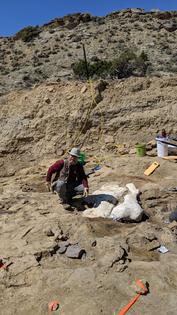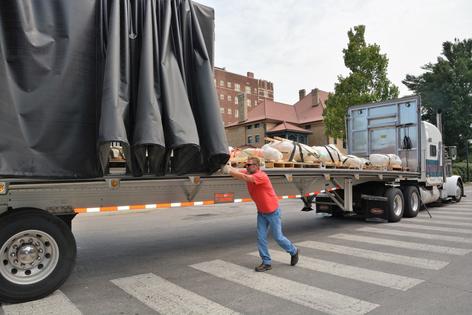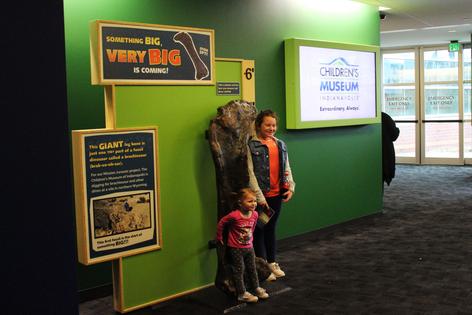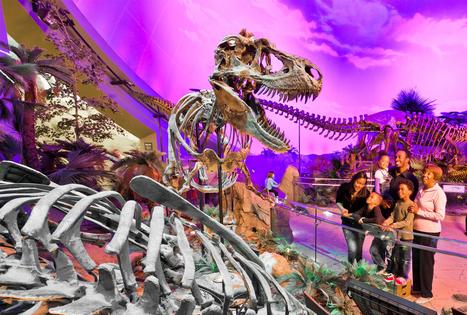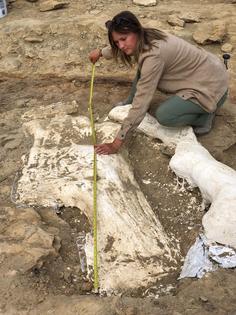Taking the Kids: Unraveling a 150-year-old mystery
CODY, Wyoming -- Looks certainly can be deceiving. We've driven more than an hour from Cody, Wyoming, and then up more than 10 miles on a rutted dirt road in the middle of nowhere -- a dusty, barren rocky landscape on a private ranch in the Big Horn Basin in north central Wyoming.
But this is what scientists have dubbed "The Jurassic Mile," for in these rocks -- in some places right at the surface -- is one of the most significant and exciting dinosaur finds in North America dating back 150 million years.
"For the diversity of the bones, plants and trackways (dinosaur footprints), this is a world-class find, absolutely. It's one of the largest excavations in North America, if not the world," said Dr. Phil Manning, Mission Jurassic Lead Scientist, chair of Natural History, the University of Manchester, UK and Scientist-In-Residence at The Children's Museum of Indianapolis.
"This is very special, to have the opportunity to actually walk in the footsteps of dinosaurs," said Professor Anne Schulp, a researcher at Naturalis Biodiversity Center, Leiden and professor of Paleontology at Utrecht University, as she stands at the site -- where only a small portion of the area has begun to be excavated -- just 1 percent of the 640-acre site, which includes four main quarries where mountains and an ancient seabed once came together. (You can read more about my visit to the dig site at takingthekids.com.
"There are so many bones, it is almost an embarrassment," said Prof. Manning, pointing to a giant leg bone here, a backbone there. We see a petrified log that might have been part of the "log jam" that killed some of these dinosaurs. "Every time we dig we hit more bone."
That children will be able to see "real," bones, not casts of fossils, will encourage their interest in the science and the "wow," factor so essential to keeping kids' engaged, scientists here say. "It is so important for kids to see the real stuff," said Prof. Manning. The museum also sponsors a couple of trips each summer for families to visit the dig site.
The Children’s Museum of Indianapolisthe largest children's museum in the world, is the lead on this 20-year, $27.5 million project, which has drawn partners and scientists from the Natural History Museum in London, (it was here that paleontologist Sir Richard Owen, the museum's founder, first coined the term "dinosaur" in 1842, it means terrible lizard), Naturalis Biodiversity Center, Leiden, Netherlands and the University of Manchester.
The scientists believe they can put together the most complete picture of the Jurassic Period, unraveling mysteries millions of years old -- like how the huge sauropods (weighing 13 tons) moved, how they behaved, what they ate and how they died. They're using cutting-edge, 21st-century science and tools, everything from particle accelerators to the world's most powerful computers, analyzing chemical isotopes and making digital copies of bones that will tell them how fast dinosaurs grew and how fast they healed.
Prof. Manning explained that thanks to the "super" computers his team is using, they are developing evolutionary algorithms that can help their skeletal models with muscles "learn" how to walk. Hopefully, he explained, that same technology can be used to help those developing better prosthetic limbs for humans.
Merging the chemistry of fossils with new technology developed at the Stanford Synchrotron Radiation Lightsource in California, he continued, has led to new ways of mapping the chemistry of modern brain tissue. "We are about to embark on a major human brain mapping exercise to look at the chemistry of both healthy and "sick," brains," he said, including those suffering from Parkinson's to Alzheimer's.
...continued
(c) 2019 DISTRIBUTED BY TRIBUNE MEDIA SERVICES, INC.

